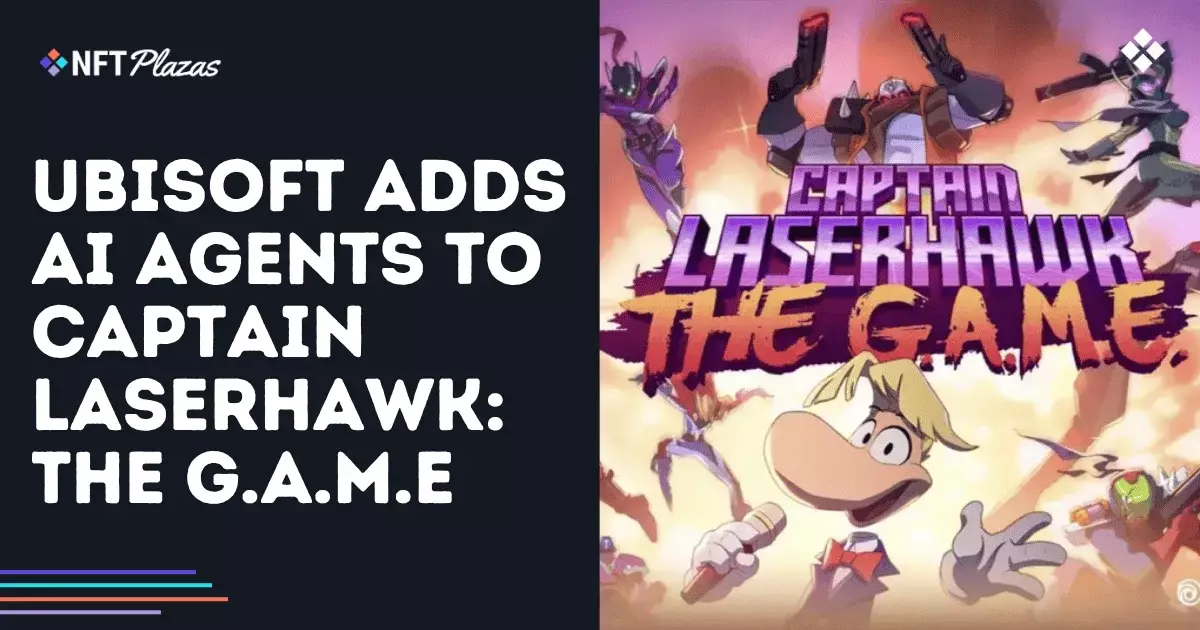The latest move by Ubisoft to embed autonomous AI agents into their blockchain-based game, Captain Laserhawk: The G.A.M.E., signals a troubling trend in modern gaming—an illusion of player agency overshadowed by centralized corporate control. By integrating AI-driven decision-making, Ubisoft appears to offer players a semblance of choice while subtly steering the narrative and governance structures behind the scenes. The notion that players can delegate voting and governance tasks to AI agents might seem appealing on the surface; after all, it promises convenience and the illusion of autonomous worlds. However, beneath this veneer lies a sophisticated mechanism designed to deepen corporate influence over gameplay decisions and community dynamics.
What Ubisoft champions as innovative—AI agents that analyze proposals, cast votes, and adapt over time—ultimately consolidates power within the hands of the developers and platform administrators. These agents, tied to NFTs that represent unique character traits, create a facade of decentralized governance. Yet, the true control remains tightly wound within the blockchain infrastructure managed by Ubisoft, limiting true player sovereignty. The AI’s role as a secondary actor designed to maintain game flow and reduce the need for constant human intervention is less about empowering players and more about ensuring the game aligns with corporate interests. When players are absent or uninterested, the AI takes over, subtly shaping outcomes and narratives in ways that may escape direct player oversight, raising questions about authenticity and influence.
Blockchain and AI: Building a veneer of transparency while centralizing power
The marriage of blockchain technology with AI governance in Ubisoft’s game cloaks an underlying paradox. Blockchain promises transparency and decentralization, yet here it serves as the backbone for a predetermined, highly controlled environment. While transactions and decisions are logged transparently, these records primarily benefit the game developers and corporate entities who oversee the system. AI agents’ decision-making processes, based on metadata linked to NFTs—such as traits, profession, and temperament—are not inherently democratic. Rather, they subtly reinforce a corporate narrative, with predefined parameters and moderation controls in place to prevent harmful content but also restrict genuine autonomy.
This design choice hints at a cautious approach to AI governance—limiting the scope to prevent unpredictable or harmful behaviors that could jeopardize brand reputation. Ubisoft emphasizes moderation and containment, ensuring their AI agents operate strictly within confined parameters. This is a far cry from fostering true player-led innovation or decentralized decision-making; instead, it is about controlling the flow of actions within a limited sandbox, ensuring that all outcomes still serve corporate interests. The system’s logging and auditability serve more to placate regulatory concerns and maintain control than to genuinely empower the players or community.
The illusion of innovation: Disguising control as progress
The move to integrate AI into gameplay and governance appears, at first glance, as progressive, innovative, and responsive to current technological trends. Yet, this push for innovation often masks a strategic attempt to keep players engaged within a framework that remains governed by corporate architects. The AI agents, presented as autonomous and adaptable, are ultimately designed to reinforce the existing hierarchy—where decisions that shape the game world are predestined and influenced heavily by developer-set parameters.
Among the most troubling aspects is Ubisoft’s talk of future scenarios where AI and player actions dovetail to produce emergent, evolving outcomes. While this suggests a lively, player-driven world, it is more likely a carefully curated experience that subtly guides players toward certain behaviors and decisions. The feedback loops between shooter performance and governance decisions serve to normalize this intervention—making players believe they are crafting their destiny, while their choices are filtered, interpreted, and often directed by AI systems optimized for corporate objectives.
This concealment of control leads to possible disenfranchisement. Players may feel they have influence, yet the underlying architecture ensures their autonomy is limited. The assumption that AI can interpret human intent and adapt accordingly is just a technological veneer that conveniently aligns with corporate interests—facilitating ongoing data collection, behavioral analysis, and narrative curation. Ultimately, this blurs the line between genuine player influence and scripted outcomes, diluting the very spirit of decentralized, community-driven gaming.
Ubisoft’s latest AI integrations exemplify a broader shift in the gaming industry—a movement away from player-centric innovation towards a model that disguises central authority behind technological sophistry. While AI and blockchain hold undeniable potential for transparency and immersion, their current deployment often serves to entrench corporate oversight rather than democratize game environments. The allure of autonomous agents and blockchain-based governance distracts from the reality: a carefully managed ecosystem designed to maintain control, collect valuable data, and ensure predictable outcomes. Genuine empowerment in gaming remains elusive when algorithms and NFTs serve as tools for corporate consolidation rather than liberation. The industry must recognize that technology, in its current form, risks becoming a Trojan horse—offering the illusion of freedom while tightening its grip on player choices.
















Leave a Reply